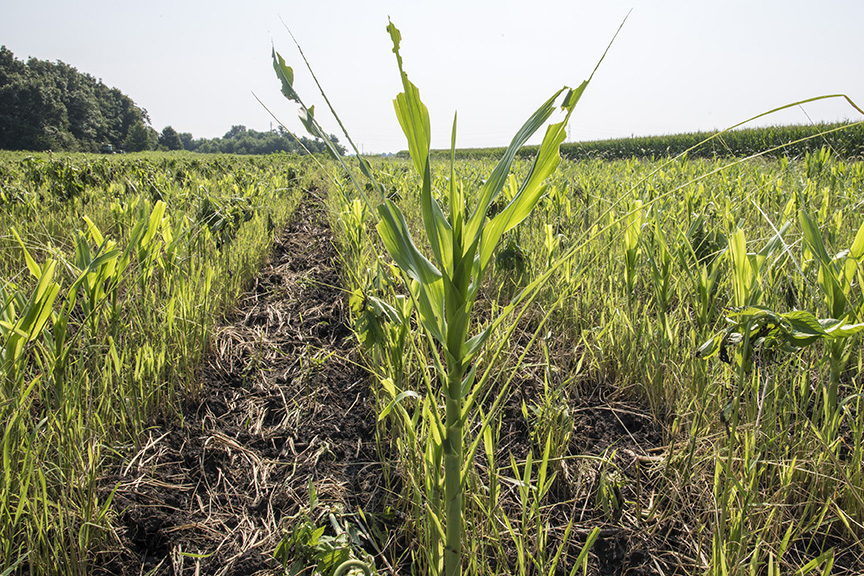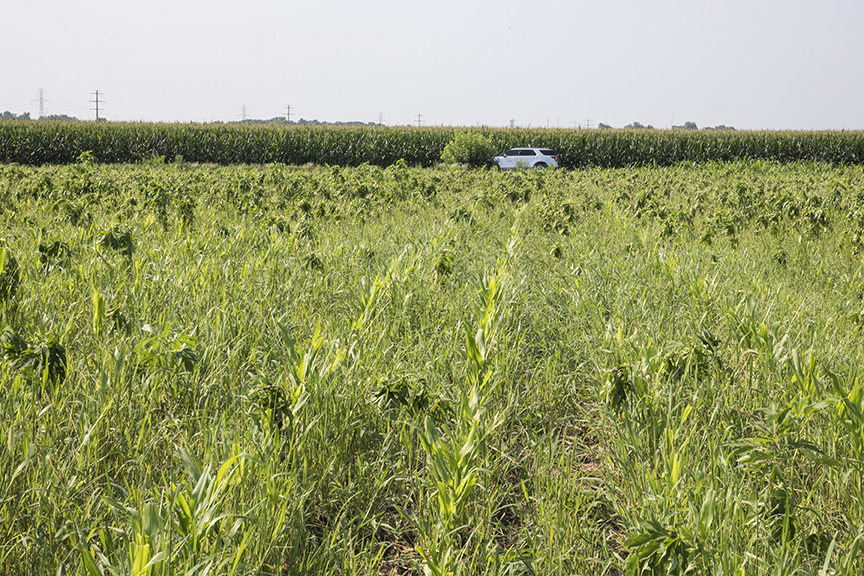In mid-June, we wrote in the Pest&Crop about the second surge of armyworm moths and suggested that dense, lush grasses (e.g., pasture) could be at risk. Though our pheromone trapping for armyworm ended at that time, Thomas Richards, NEPAC research farm (Whitley County), decided to continue monitoring out of curiosity. The mid-June moth count was 1674, the following week’s counts were 959,2009,1613, then beginning to tail off at 528 a month later. Those were some high counts!
While driving a county road early this week, a very weedy field caught my attention. In stopping, I could finally tell that the field was planted into corn. In rows were spindles of stalks among the very heavy grass and broadleaf pressure. Entering the field, I didn’t find any active armyworm larva, though the telltale signs of their leaf feeding were present. There were fresh wheel tracks in the field and the giant ragweed was drooping, so the producer obviously sprayed with an herbicide, perhaps with an insecticide as well. In pulling up a few grass clumps, I was able to find armyworm pupa. This field of “waist high” corn, based on midrib length, was a disaster, not just from the armyworm damage. Most intriguing was how the feeding nearly stopped at the adjoining “normal” cornfield, with only a few leaves damaged. BTW, even Bt-traited corn, at this growth stage (R2/3), would have little effect on an invasion of mature, “marching,” armyworm. If you are wondering, the grasses along the road were also denuded, and there I did find a few live larvae still feeding.
Obviously, this mismanaged field is a “freak” among the sea of beautiful cornfields throughout Indiana. But what amazes me is how the armyworm moths, randomly flying the night skies, are able to target this field for egg deposition. We have seen similar situations in the early spring when small grains or grassy cover crops too are targeted. I suspect, there are other “back 40” cornfields that have sustained damage in a similar manner and will be revealed at harvest. At that time, perhaps the grazing deer will take the blame.
Happy Scouting!

The good news is that there is new leaf growth out of these whorls.

Armyworm feeding of corn and grass weeds, up to the adjoining field.

How to attract armyworm moths.


